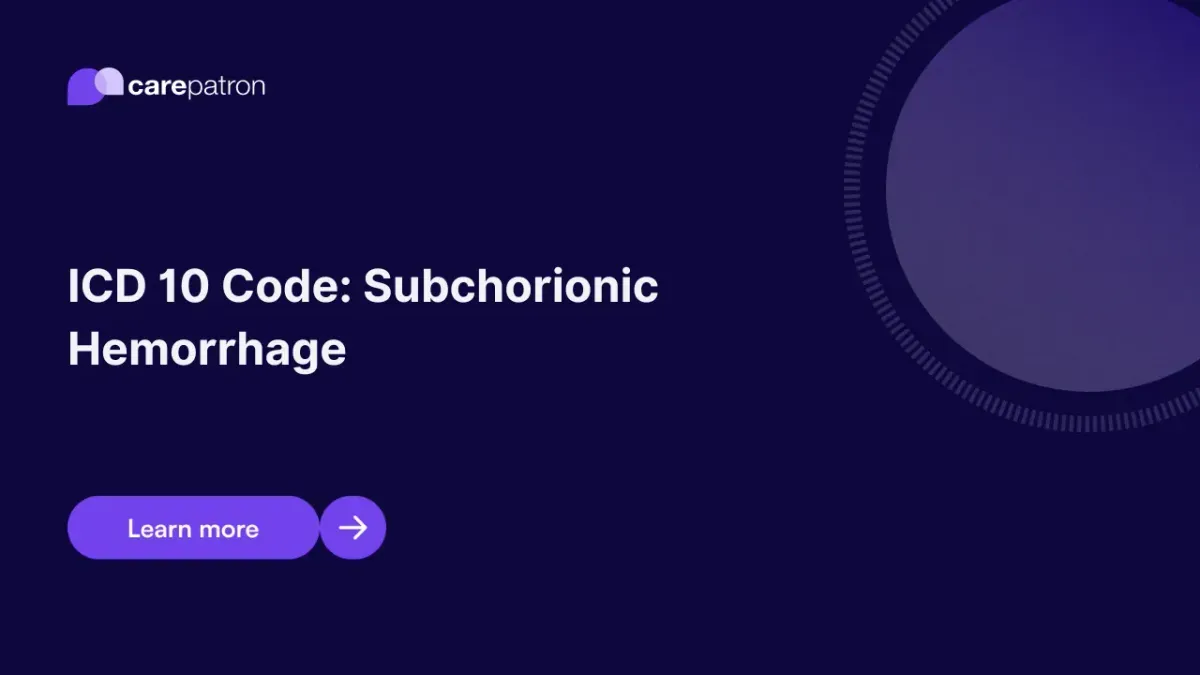
Subchorionic Hemorrhage ICD-10-CM Codes | 2023
Discover the appropriate ICD-10 codes for accurately documenting subchorionic hemorrhage, essential for medical billing and coding.
Use Code
Commonly asked questions
Use when a pregnancy is complicated by a bleed under the chorionic membrane diagnosed by clinical or imaging findings.
Treatments may include bed rest, pelvic rest, and monitoring. In some cases, no treatment is required, and the hemorrhage resolves independently.
It indicates that the patient has experienced a bleed between the chorion and the wall of the uterus during pregnancy.
EHR and practice management software
Get started for free
*No credit card required
Free
$0/usd
Unlimited clients
Telehealth
1GB of storage
Client portal text
Automated billing and online payments
